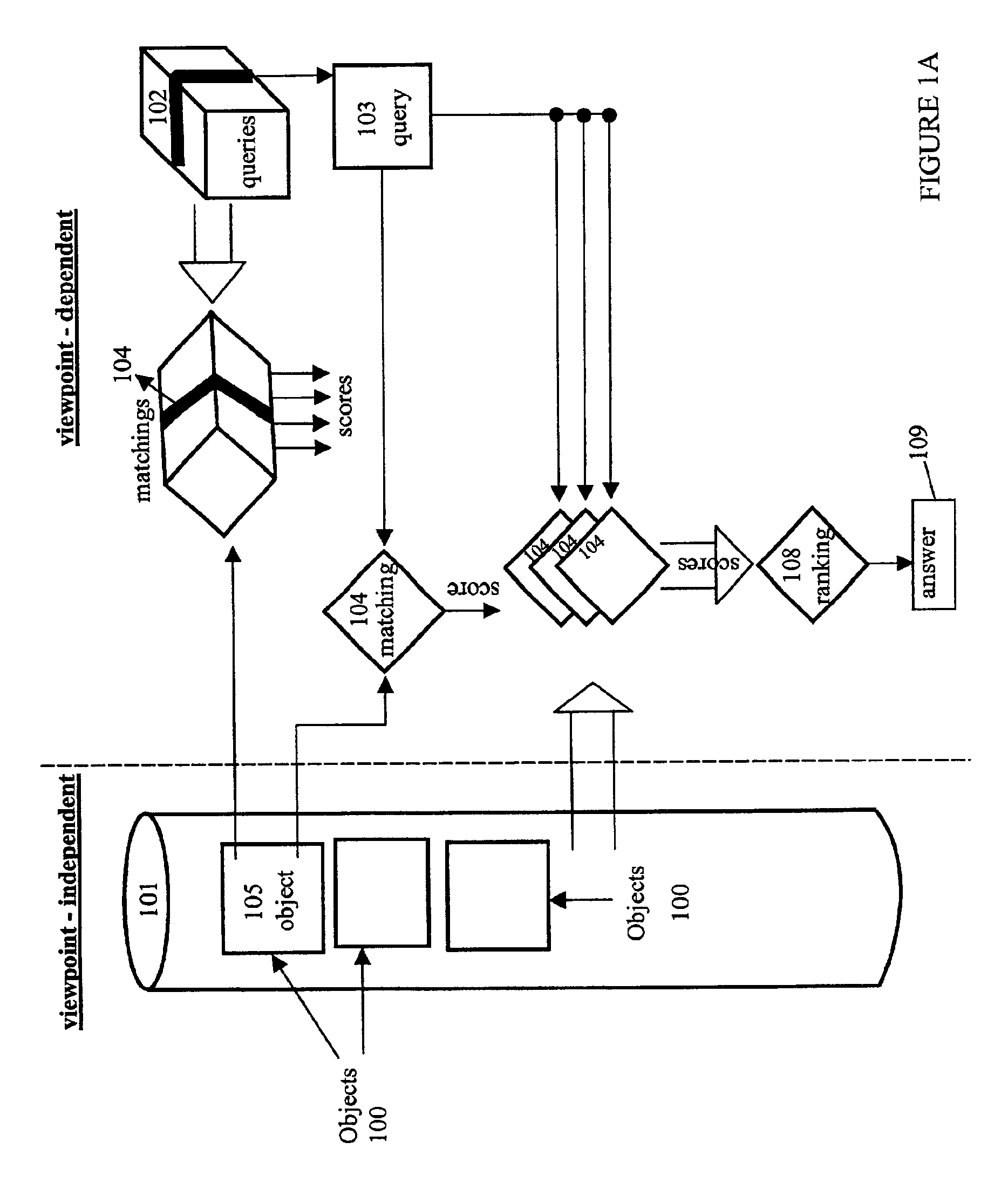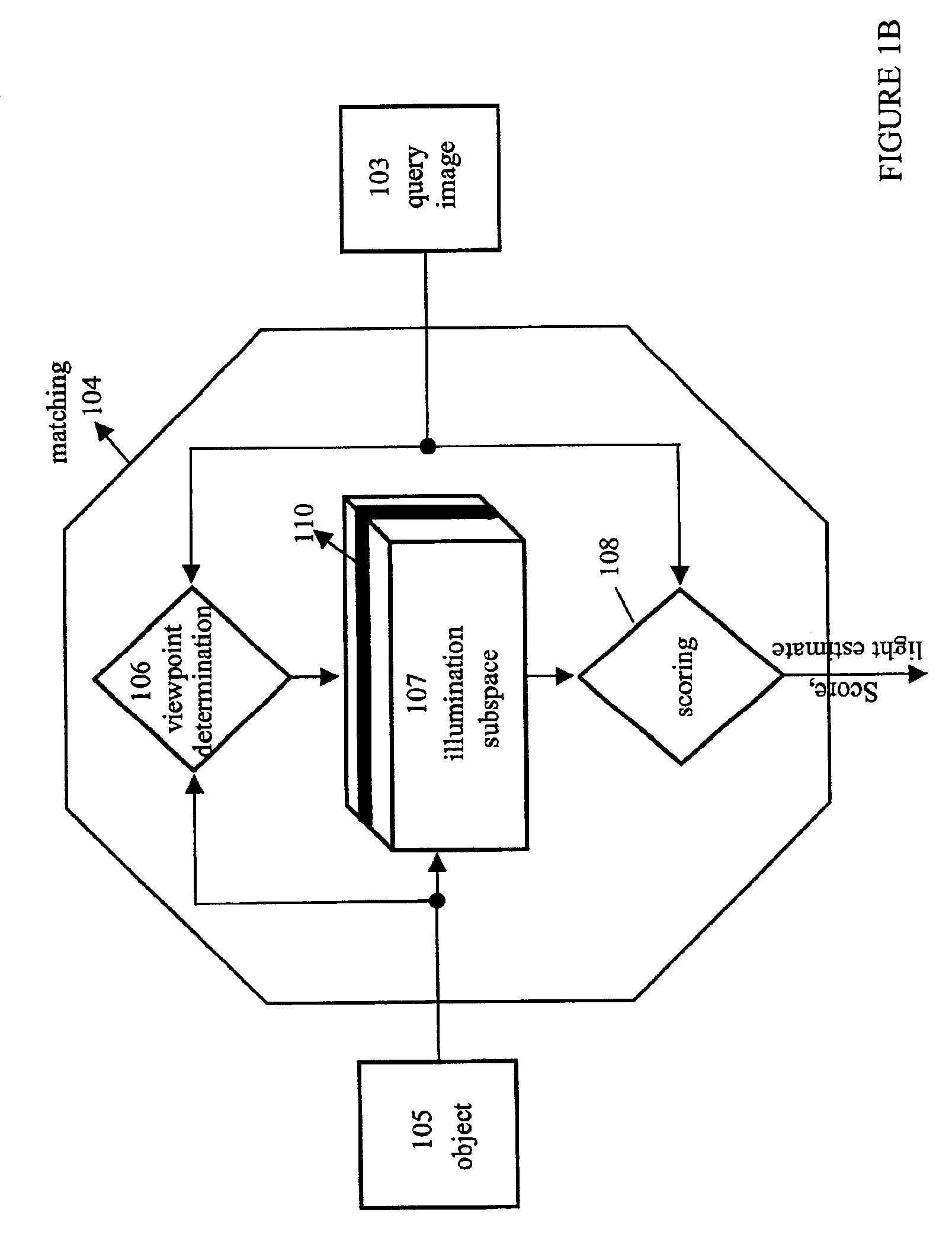Fast optimal linear approximation of the images of variably illuminated solid objects for recognition
a solid object, fast technology, applied in image data processing, three-dimensional object recognition, instruments, etc., can solve the problems of weak signals, even though important, not being reliably detected, and insufficient precision of the number of pictures that can be don
- Summary
- Abstract
- Description
- Claims
- Application Information
AI Technical Summary
Benefits of technology
Problems solved by technology
Method used
Image
Examples
Embodiment Construction
Fast Calculation of an Element of the Spatial Covariance Matrix for a Given Continuous Distribution of Illumination Conditions
[0051]The results of any high-level computer-vision algorithm, such as determination of the light sources and recognition of a 3-dimensional object, critically depend on the degree of correctness of the low-dimensional subspace 107 in which the images of the target object 105 are believed to be contained.
[0052]In order to build increasingly correct approximations of said sub space 107, increasingly finer samplings of the illumination conditions are necessary. This is, however, a problem, since for every sample point a new rendering of the object needs to be made, and the rendering operation is very expensive. Also, since the direction of the illumination is parameterized by the points on a sphere—a two-dimensional surface—the number of samples on that surface, T, grows quadratically, T=O((1 / d)2), with the sampling quality—the inverse of the distance between t...
PUM
 Login to View More
Login to View More Abstract
Description
Claims
Application Information
 Login to View More
Login to View More - R&D
- Intellectual Property
- Life Sciences
- Materials
- Tech Scout
- Unparalleled Data Quality
- Higher Quality Content
- 60% Fewer Hallucinations
Browse by: Latest US Patents, China's latest patents, Technical Efficacy Thesaurus, Application Domain, Technology Topic, Popular Technical Reports.
© 2025 PatSnap. All rights reserved.Legal|Privacy policy|Modern Slavery Act Transparency Statement|Sitemap|About US| Contact US: help@patsnap.com



